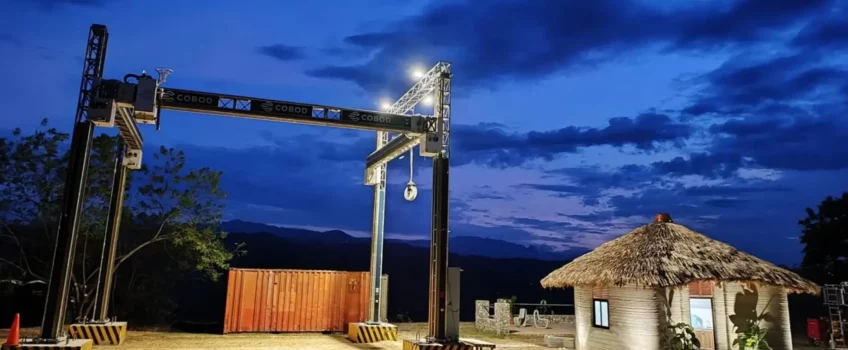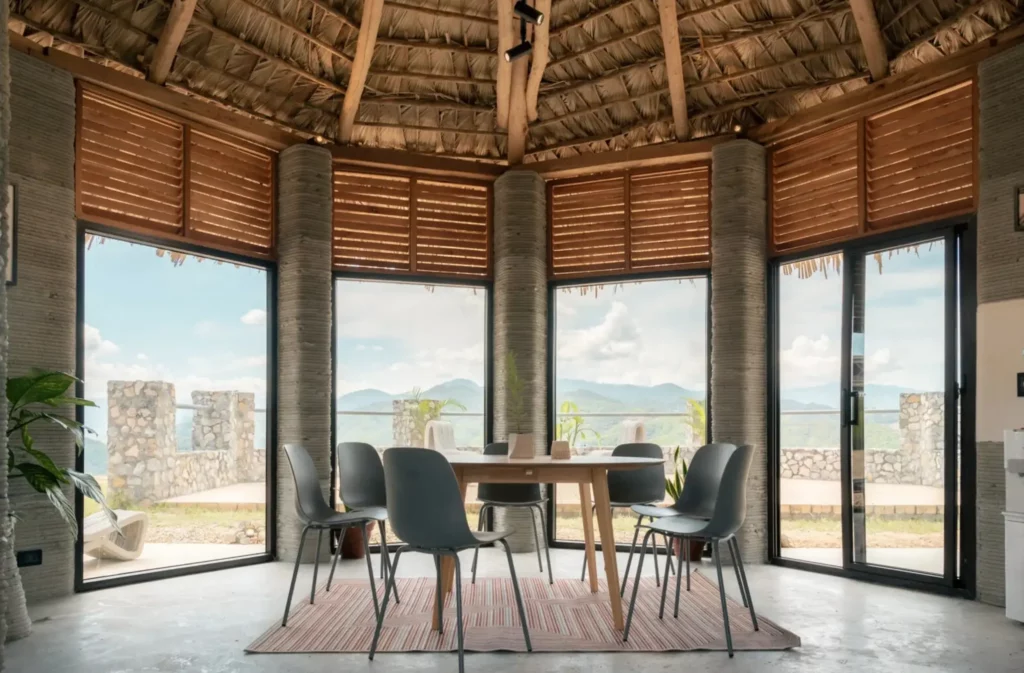
In an exhilarating advancement for construction technology and architectural innovation, cement company Progreso has etched its name in the annals of history. Nestled in the heart of Guatemala, a prototype dwelling stands as a testament to the harmonious blend of cutting-edge 3D printing and age-old traditional craftsmanship. This pioneering earthquake-resistant house was printed in just 26 hours, showcasing an unprecedented fusion of speed, efficiency, and resilience.
The Concept Behind an Earthquake-Resistant House
The creation journey of this prototype is nothing short of mesmerising. Employing the renowned COBOD’s BOD2 3D printer, a technological masterpiece that also graced the construction of Europe’s first two-story 3D printed house and a recent post office in India, this earthquake-resistant structure came to life. A meticulous and precise movement of the printer’s arms, extruding a specially formulated cement mixture in layers, unveiled a structure designed to withstand the trembles of earthquakes.
According to the press release, “The project has successfully taken steps to validate the structural viability of 3D construction printing in a seismic-prone region. Due to the use of 3D printing, the house features highly organic-shaped walls that would otherwise be extremely expensive, even unfeasible to complete with concrete blocks, the region’s predominant building material.”
The 3D-printed concrete walls are paired with a roof made of palm leaves in the style of ‘Rancho’. This traditional roofing material has been used for generations in Latin America for its affordability, ability to provide thermal comfort, and suitability for seismic regions. The flexible and lightweight nature of this material makes it an ideal choice.
A Symphony of Tradition and Innovation
Although technology is at the forefront, the heart of local craftsmanship beats within this earthquake-resistant house. The ‘Rancho’ type palm leaves roof, a traditional insignia of Latin American architecture, adorns the modern 3D printed concrete walls.
“This combination not only enhances thermal comfort but is uniquely suited for seismic regions due to the flexible and lightweight nature of the materials,” the official press release elaborated.
Beyond the Build: 3D Printing’s Global Impact
The proliferation of 3D printing technology, particularly in constructing earthquake-resistant houses, isn’t merely a stride in architectural innovation but a leap towards global sustainability and efficiency. At the core of our engineering ethos at our UK-based firm, where precision and custom fabrication are not just services but an art, we watch these developments with keen interest.
COBOD’s BOD2 printer is not just a machine but a revolution. It exemplifies speed, precision, and adaptability, characteristics revered in our work across construction, rail, automotive, aerospace, defence, and oil and gas sectors.
A Glimpse Inside the 3D Printed Home
Enveloping a spacious 49 square metres, the interior of this prototype is a harmonious blend of simplicity and functionality. The central living area, marked by the raw, aesthetic appeal of uncovered 3D printed concrete, exemplifies modern minimalism. Adjacent, the multi-functional space can transform from an office to a bedroom, testifying to the versatile nature of 3D printed constructions.
As a research tool, this prototype represents the advent of a future where an earthquake-resistant house, created through 3D printing, may become commonplace. It envisions a time when the fusion of traditional and modern craftsmanship, human ingenuity, and technological advancements will not only construct buildings, but also forge homes that can withstand nature’s unpredictable temperament with resilience and grace.
For more interesting articles on engineering, manufacturing and technology, please read our blog as we specialise in construction, fabrication, advanced manufacturing and precision engineering, among others.


 Mail:
Mail: 




